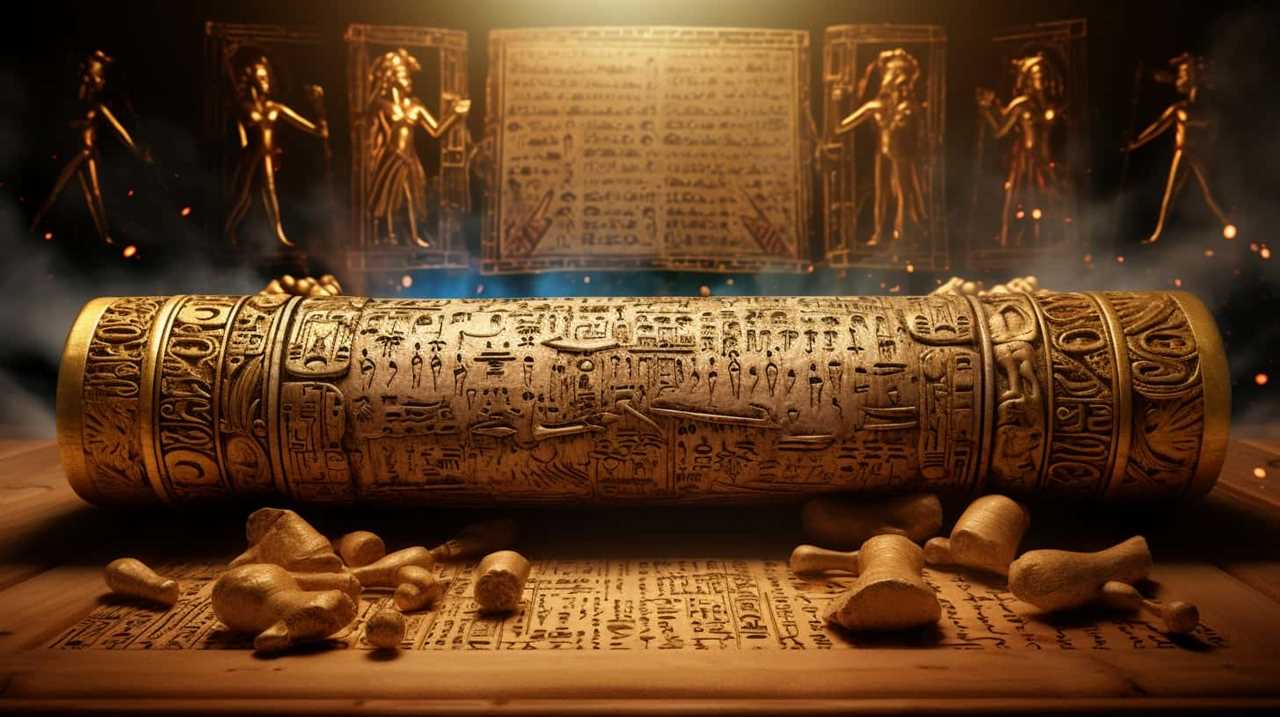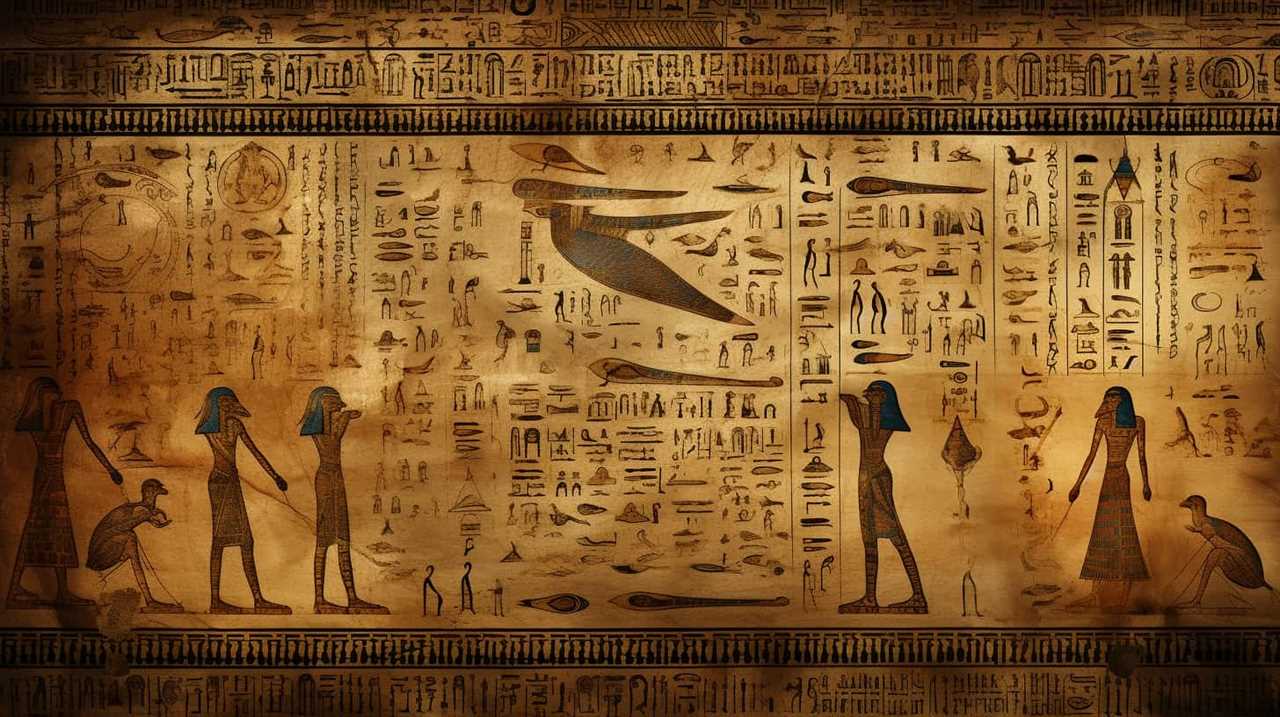As we look to grow personally and work towards mastering our lives, we frequently look for guidance and inspiration. Fortunately, we have come across a set of 14 Bible verses that can promote personal growth. When we apply these verses with purpose and commitment, they can change our lives and push us towards achieving greatness.
In this journey of self-improvement, we must remember to trust in the Lord and lean not on our own understanding (Proverbs 3:5-6). With the strength and perseverance provided by Philippians 4:13, we can overcome any challenge that comes our way. Let us renew our minds and be transformed by the renewing of our thoughts (Romans 12:2), always striving to be slow to anger and quick to listen (James 1:19).
As we seek first the kingdom of God (Matthew 6:33), let us commit our work to the Lord and trust that our plans will be established (Proverbs 16:3). Through it all, we can find comfort in the assurance that God is with us, strengthening and upholding us (Isaiah 41:10). So let us cast all our anxieties onto Him, for He cares for us (1 Peter 5:7). As we delight ourselves in the Lord, may He grant us the desires of our hearts (Psalm 37:4).
Together, let us embark on this journey of personal growth, guided by these 14 Bible verses, knowing that with God’s help, we can achieve mastery in every area of our lives.
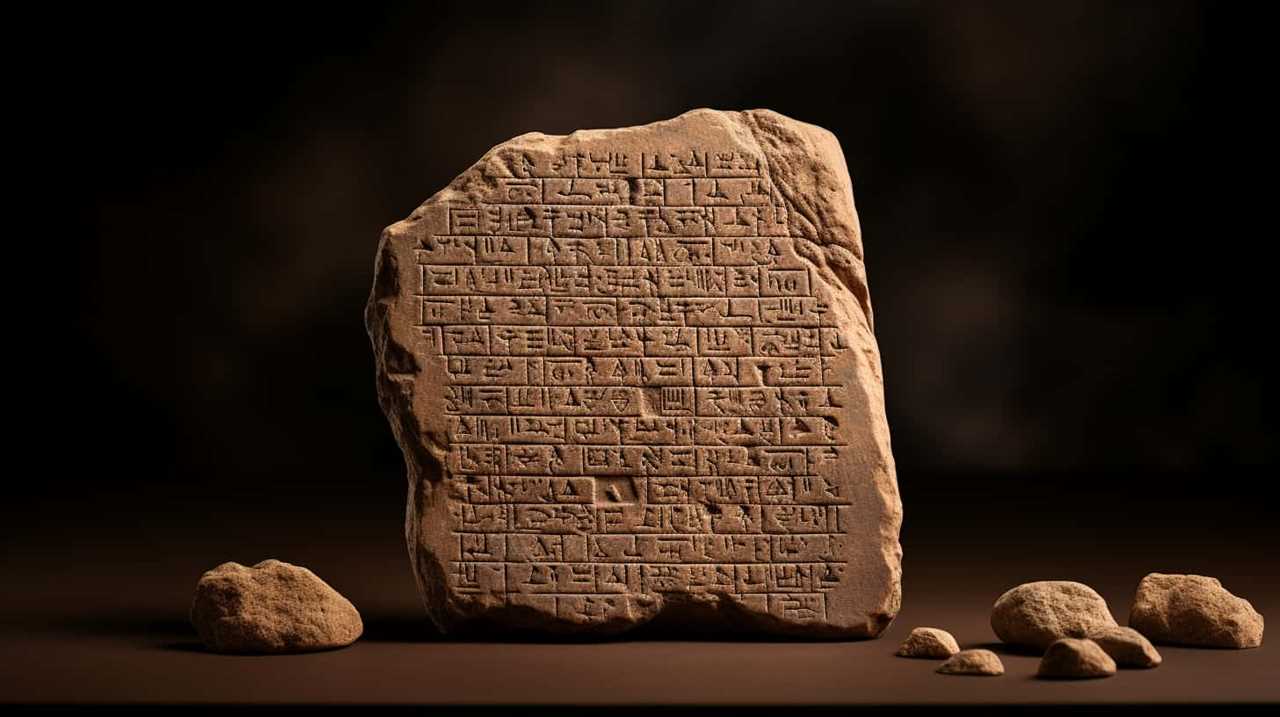
Key Takeaways
- Trusting in the Lord and seeking His guidance is essential for personal growth.
- Overcoming challenges and persevering with the strength of Christ leads to personal growth.
- Renewing the mind and aligning with God’s truth cultivates transformation.
- Cultivating patience, kindness, and healthy relationships contributes to personal growth.
Proverbs 3:5-6
First, let’s explore the significance of the well-known Bible verses Proverbs 3:5-6 in our personal growth journey. These verses hold a profound message that’s fundamental to cultivating trust and seeking guidance in our lives.
Proverbs 3:5-6 states, ‘Trust in the Lord with all your heart and lean not on your own understanding; in all your ways submit to him, and he’ll make your paths straight.’
Cultivating trust is an essential aspect of our personal growth journey. Trusting in the Lord with all our heart means placing our complete reliance and confidence in Him. It requires surrendering our own limited understanding and acknowledging that God’s wisdom surpasses our own. By doing so, we open ourselves to the transformative power of divine guidance.
Seeking guidance is another crucial element in our personal growth. When we submit to the Lord in all our ways, we acknowledge His authority and seek His direction in every aspect of our lives. This act of submission demonstrates humility and a recognition of our need for guidance beyond our own capabilities. By seeking God’s guidance, we allow Him to shape our paths and lead us towards growth and fulfillment.

Philippians 4:13
While we may face challenges and obstacles in our personal growth journey, Philippians 4:13 reassures us that we can do all things through Christ who strengthens us. This powerful verse speaks to the power of perseverance and determination in achieving personal growth. It reminds us that with Christ by our side, we have the strength and ability to overcome any obstacle that comes our way.
In Philippians 4:13, the apostle Paul emphasizes the importance of faith and trust in God’s provision. Through this verse, Paul encourages us to put our trust in Christ and rely on His strength to guide us through our personal growth journey.
To further understand the significance of Philippians 4:13, let’s explore the role of faith and trust in overcoming obstacles.
| Column 1 | Column 2 | Column 3 |
|---|---|---|
| Power of Faith | Trust | Overcoming |
| Perseverance | Determination | Obstacles |
| Personal Growth | Strength | Achieving Goals |
By having faith in God’s plan for our lives and trusting in His guidance, we can develop the perseverance and determination needed to overcome obstacles and achieve personal growth. This verse serves as a reminder that we are not alone in our journey and that through Christ, we have the strength to overcome any challenge that comes our way.
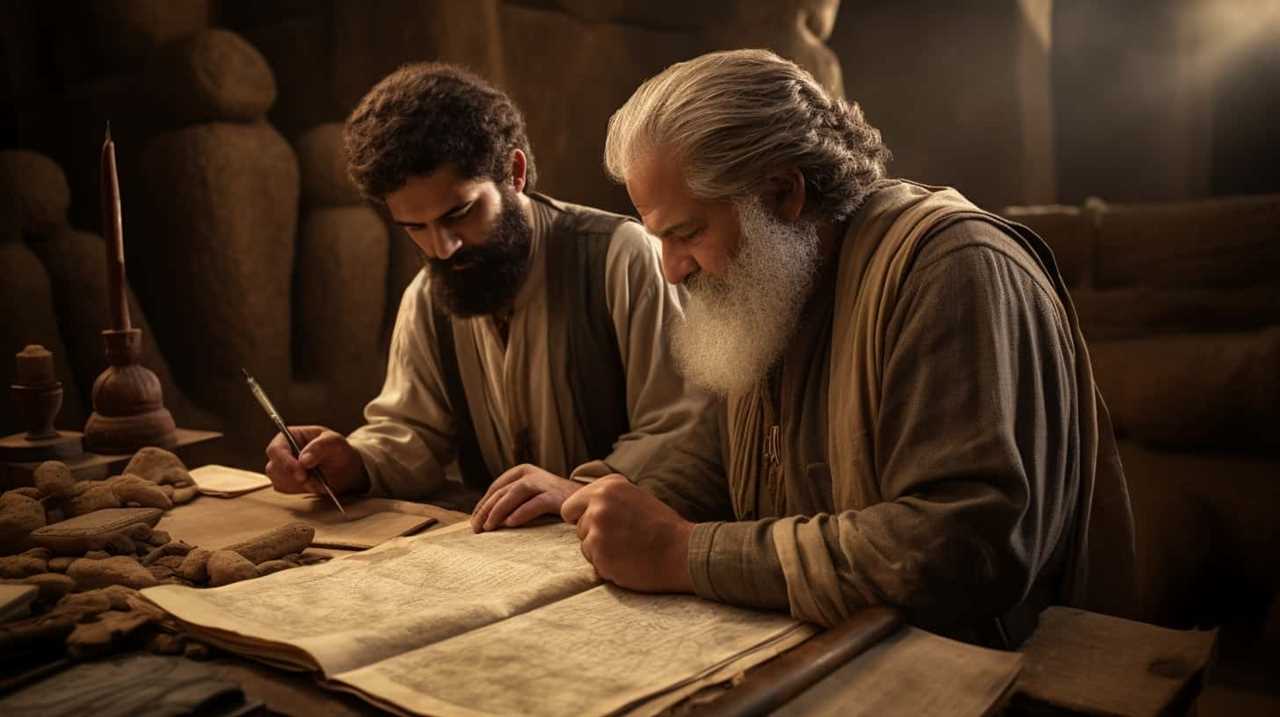
Transition: Now that we have explored the power of faith and trust in overcoming obstacles, let’s delve into another important verse for personal growth, Romans 12:2.
Romans 12:2
Now let’s explore the significance of Romans 12:2 in fostering personal growth. This verse states, ‘Do not conform to the pattern of this world, but be transformed by the renewing of your mind.’ In this passage, the apostle Paul encourages believers to actively resist the pressures and influences of the world and instead cultivate transformation through the renewing of their minds.
Cultivating transformation involves a deliberate and intentional effort to change one’s thoughts, attitudes, and behaviors. It requires a conscious decision to align oneself with God’s truth and values, rather than conforming to the worldly standards and expectations. By renewing the mind, individuals can experience a profound shift in their perspectives and priorities, leading to personal growth and spiritual maturity.
Renewing the mind involves actively engaging with God’s Word, seeking His guidance, and allowing the Holy Spirit to transform one’s thinking. It requires a commitment to ongoing learning, self-reflection, and self-discipline. Through the process of renewing the mind, individuals can develop a renewed sense of purpose, a deeper understanding of God’s will, and a greater capacity to live according to His principles.
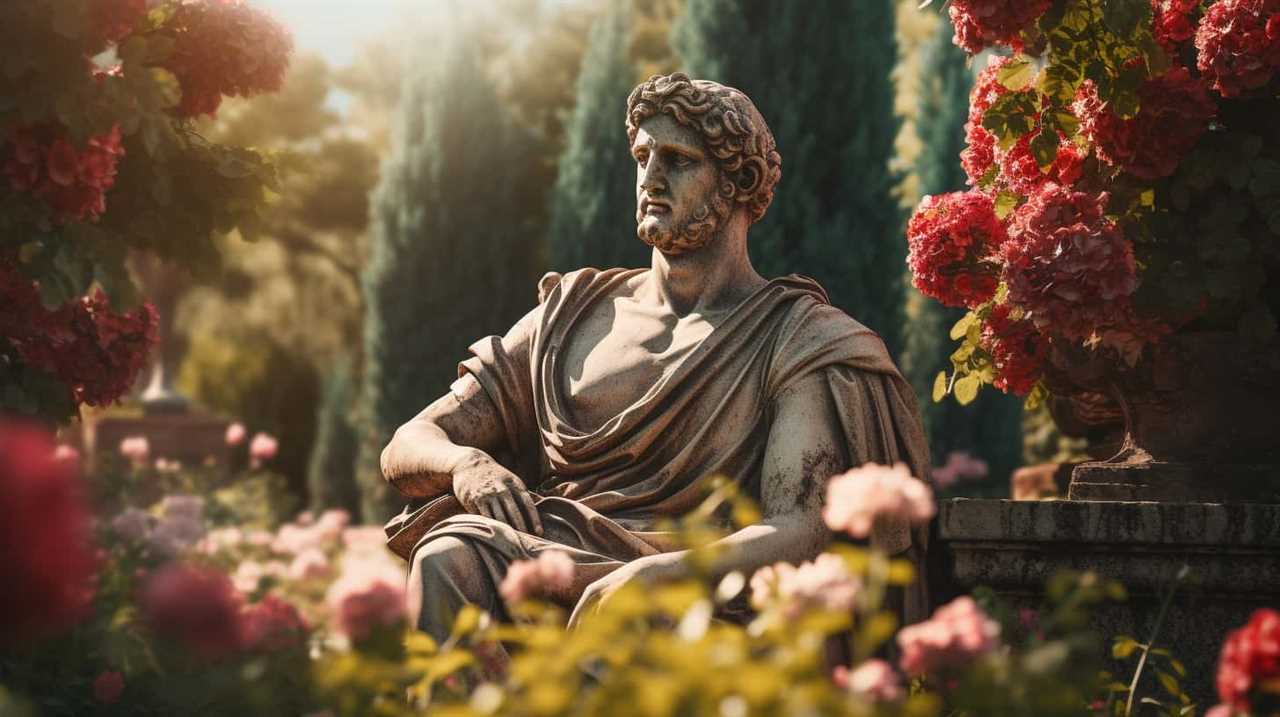
James 1:19
When considering James 1:19, we’re reminded of the importance of cultivating patience and kindness in our interactions with others.
This verse encourages us to be quick to listen, slow to speak, and slow to anger, emphasizing the need to approach conversations with humility and understanding.
Cultivating Patience and Kindness
Practicing patience and kindness (James 1:19) can greatly enhance our personal growth. These virtues aren’t only essential for healthy relationships but also contribute to our overall well-being and character development.
When we cultivate patience, we learn to navigate challenges with grace and composure. It allows us to develop resilience, as we understand that setbacks are temporary and opportunities for growth.

Kindness, on the other hand, fosters compassion and empathy towards others. It encourages us to act selflessly and extend a helping hand to those in need.
Nurturing Humility and Gratitude
As we embrace the teachings of James 1:19, fostering humility and gratitude becomes an integral part of our personal growth journey. Developing a grateful heart is essential in cultivating humility and fostering a deep sense of gratitude. It’s through gratitude that we learn to appreciate the blessings in our lives and acknowledge the goodness of others. Gratitude helps us to shift our focus from what we lack to what we have, fostering contentment and a sense of abundance.
Cultivating humility allows us to recognize our own limitations and weaknesses, leading to a greater understanding and empathy for others. It’s through humility that we learn to value the contributions of others and approach life with a sense of awe and wonder. By nurturing humility and gratitude, we open ourselves up to a world of possibilities and growth.
Transition: Embracing wisdom and understanding is the next step in our journey towards personal growth.

Embracing Wisdom and Understanding
In this journey of personal growth, we embrace wisdom and understanding as we delve into James 1:19. Embracing change is an essential aspect of our growth, as it allows us to adapt to new circumstances and challenges. Self-reflection plays a crucial role in this process, enabling us to examine our thoughts, actions, and beliefs, and identify areas for improvement. Growth, on the other hand, involves continuously striving to become the best version of ourselves, constantly seeking personal development and transformation.
To fully embrace wisdom and understanding, we must:
- Cultivate a mindset of curiosity and openness, always seeking to learn and expand our knowledge.
- Practice active listening, genuinely hearing others’ perspectives and insights.
- Engage in critical thinking, questioning and analyzing information to gain deeper insights.
Matthew 6:33
Matthew 6:33 reminds us of the importance of seeking God’s kingdom first in our lives. By prioritizing our spiritual growth and nurturing our personal relationship with God, we can experience personal transformation and true fulfillment.
This verse encourages us to align our desires and priorities with God’s will, trusting that as we seek Him first, He’ll provide for our needs and guide us towards personal growth and development.

Seeking God’s Kingdom First
Our primary focus should be on prioritizing the kingdom of God above all else, as stated in the book of Matthew 6:33. Seeking God’s kingdom first means placing God’s will and His purposes at the forefront of our lives. It requires us to prioritize our relationship with God and seek His guidance in every decision we make.
When we prioritize God’s kingdom, we acknowledge His sovereignty and trust in His provision. This mindset transforms our perspective, shifting our focus from worldly concerns to eternal values. As we seek God’s kingdom first, we experience a deeper intimacy with Him, find peace in His presence, and witness His faithfulness in meeting our needs.
It’s through this intentional seeking that personal growth and spiritual transformation occur.
Prioritizing Spiritual Growth
As believers, we consistently prioritize spiritual growth by seeking God’s kingdom first. Fostering spiritual growth requires us to prioritize our faith and spirituality, making them central to our lives.

In Matthew 6:33, Jesus instructs his disciples to ‘seek first the kingdom of God and his righteousness, and all these things will be added to you.’ This verse emphasizes the importance of prioritizing our relationship with God above all else. By putting God first, we align ourselves with His will and purpose for our lives, allowing Him to guide and shape us.
Prioritizing spiritual growth involves dedicating time for prayer, studying the Bible, and participating in worship and fellowship with other believers. It requires us to continually seek a deeper understanding of God’s truth and to apply it in our daily lives.
Nurturing Personal Relationship With God
To nurture our personal relationship with God, we prioritize seeking His kingdom above all else. This involves developing spiritual disciplines and deepening our prayer life.
Developing spiritual disciplines: We must cultivate habits that draw us closer to God, such as studying His Word, meditating on Scripture, and practicing solitude and silence. These disciplines help us align our hearts with God’s will and cultivate a deeper intimacy with Him.

Deepening prayer life: Prayer is essential for nurturing our relationship with God. We should strive to make prayer a daily practice, setting aside dedicated time to communicate with God, pour out our hearts, and listen for His voice. We can also explore different forms of prayer, such as intercession, thanksgiving, and contemplative prayer, to deepen our connection with Him.
Psalm 46:10
When reflecting on personal growth, it’s important to consider the message conveyed in Psalm 46:10. This verse encourages us to explore stillness and meditation as a means to foster our personal development. In today’s fast-paced world, finding moments of tranquility can be challenging, but it’s in the stillness that we can truly connect with ourselves and with God.
In our pursuit of personal growth, we often strive to control every aspect of our lives. However, Psalm 46:10 reminds us of the power of surrender and trust. By letting go of our need for control and placing our trust in God’s plan, we open ourselves up to new possibilities and allow personal growth to take place.
Through stillness and meditation, we create space for self-reflection and introspection. We can examine our thoughts, emotions, and actions with clarity and objectivity. This self-awareness is essential for personal growth, as it enables us to identify areas that need improvement and make positive changes.

In addition, stillness and meditation provide us with an opportunity to deepen our connection with God. As we quiet our minds and open our hearts, we become more receptive to His guidance and wisdom. This connection allows us to align our desires and goals with God’s purpose for our lives, leading to a more fulfilled and purposeful existence.
Ephesians 4:32
When considering personal growth, one can’t overlook the importance of forgiveness.
Ephesians 4:32 teaches us that forgiving others promotes our own growth, as it allows us to let go of grudges and negative emotions that hinder our progress.
By extending kindness and compassion, we not only foster a positive environment but also contribute to our personal development.

These two key points remind us of the transformative power of forgiveness and kindness in our journey towards personal growth.
Forgiving Others Promotes Growth
By extending forgiveness to others, we actively contribute to our own personal growth, as emphasized in Ephesians 4:32. Forgiving others isn’t only a virtue but also a key aspect of our spiritual and emotional development. Here are three ways in which forgiving others promotes our personal growth:
- Cultivating compassion: When we forgive others, we tap into our capacity for empathy and understanding. We develop a compassionate mindset that allows us to see beyond the surface and appreciate the struggles and pain that others may be experiencing.
- Practicing forgiveness: Forgiving others requires us to let go of resentment and bitterness. It helps us release negative emotions and frees us from the burden of carrying grudges. By practicing forgiveness, we create space for healing and personal growth.
- Building meaningful relationships: Forgiveness plays a vital role in maintaining healthy relationships. It fosters reconciliation and allows us to move forward, strengthening our connections with others and promoting personal growth.
Kindness Leads to Growth
As we embrace kindness, as encouraged in Ephesians 4:32, we pave the way for personal growth in our lives. Cultivating compassion and practicing empathy are essential components of kindness that have transformative effects on our well-being and relationships. Kindness, rooted in love and selflessness, allows us to extend grace and understanding to others, fostering an environment of harmony and goodwill.
When we choose to be kind, we open ourselves up to new perspectives and experiences. We become more attuned to the needs of others, developing a greater sense of empathy and connection. Kindness helps us break down barriers and build bridges, creating space for personal growth and transformation.

In order to fully embrace kindness, we must actively cultivate compassion and practice empathy. Compassion involves recognizing the suffering of others and responding with care and understanding. It requires us to put ourselves in someone else’s shoes, fostering a deeper sense of empathy that allows us to connect on a more meaningful level. By prioritizing kindness and incorporating these principles into our daily lives, we create an environment conducive to personal growth and development.
| Cultivating Compassion | Practicing Empathy | Kindness and Personal Growth |
|---|---|---|
| – Recognizing the suffering of others | – Putting ourselves in someone else’s shoes | – Creating an environment of harmony and goodwill |
| – Responding with care and understanding | – Developing a deeper sense of connection | – Opening ourselves up to new perspectives and experiences |
| – Fostering empathy and connection | – Breaking down barriers and building bridges | – Transforming ourselves and our relationships |
1 Corinthians 16:14
To foster personal growth, we can embrace the teaching of Corinthians 16:14. This verse reminds us of the importance of cultivating love and compassion in our lives. It encourages us to live a life of kindness and grace, not only towards others but also towards ourselves. By embodying these qualities, we can create an environment that nurtures personal growth and fosters positive relationships.
In light of Corinthians 16:14, let’s consider the following:
- Acts of love and compassion: Engaging in acts of kindness towards others not only benefits them but also brings us a sense of fulfillment. By showing love and compassion, we cultivate an atmosphere of understanding and empathy, which in turn encourages personal growth.
- Living a life of kindness: Choosing to live a life of kindness means treating others with respect and dignity. It involves going the extra mile to lend a helping hand and showing compassion to those in need. Practicing kindness not only improves our relationships but also brings us closer to our true selves.
- Embracing grace: Grace is the ability to extend forgiveness and understanding, even in difficult situations. By embracing grace, we can let go of past hurts and resentments, allowing personal growth to flourish. It opens doors to healing and reconciliation, both within ourselves and in our relationships with others.
Incorporating the teachings of Corinthians 16:14 into our lives fosters personal growth by creating an environment of love, compassion, kindness, and grace. Let’s strive to embody these qualities as we journey towards personal development and self-mastery.
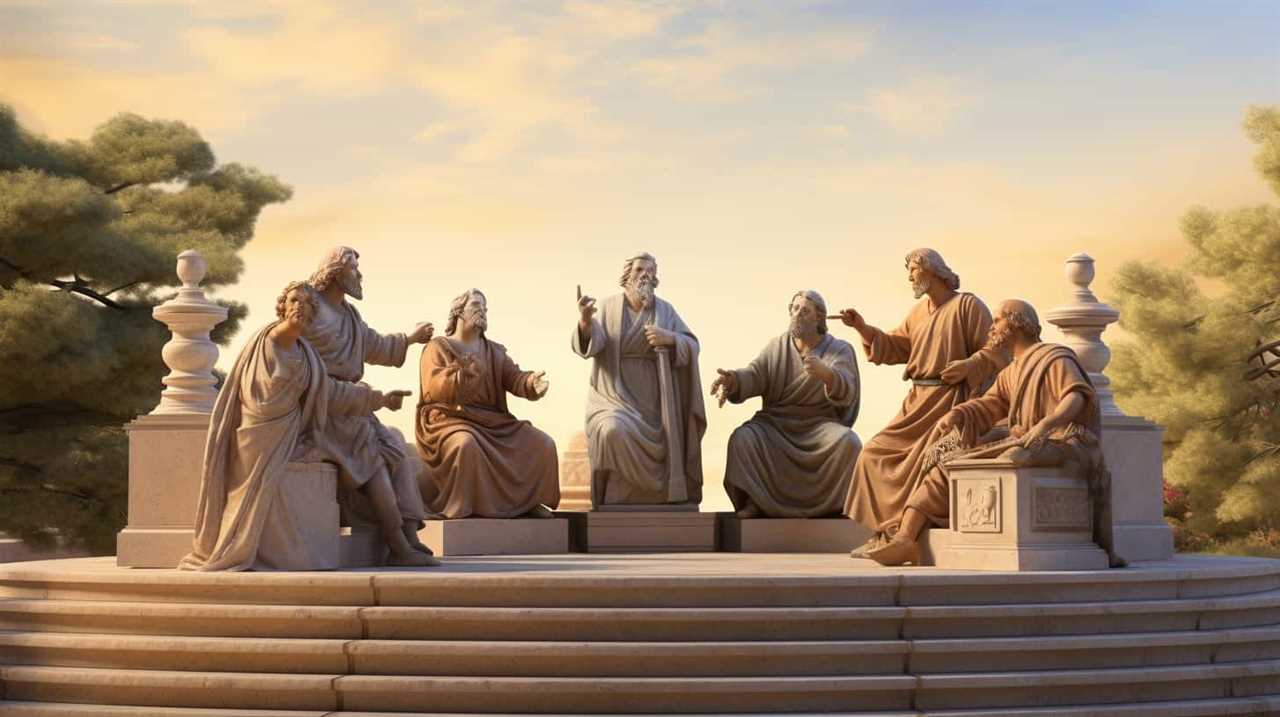
Galatians 5:22-23
In Galatians 5:22-23, we’re introduced to the concept of the fruit of the Spirit. This passage outlines the qualities that should be cultivated in our lives as believers. The fruit of the Spirit includes love, joy, peace, patience, kindness, goodness, faithfulness, gentleness, and self-control. These virtues aren’t simply innate qualities that we possess, but rather they’re spiritual attributes that are developed through our relationship with God.
Cultivating the fruit of the Spirit requires intentional effort and a willingness to surrender to the work of the Holy Spirit in our lives. It involves allowing God to shape our character and transform us from the inside out. Fostering personal growth through faith means actively seeking to align our thoughts, attitudes, and actions with the teachings of Scripture.
By cultivating the fruit of the Spirit, we not only grow personally, but we also become a positive influence in the lives of those around us. Our love, joy, and peace become a source of encouragement and inspiration to others. Our patience, kindness, and goodness reflect the character of Christ and draw others to Him. Our faithfulness, gentleness, and self-control demonstrate our commitment to living a life that honors God.
Colossians 3:23
Cultivating personal growth through faith involves embracing the message of Colossians 3:23, which emphasizes the importance of wholeheartedly engaging in our work as if we’re serving the Lord Himself. This verse encourages us to approach our tasks with diligence, commitment, and a desire for excellence. It reminds us that our work, regardless of its nature, has value and significance in the eyes of God.

To truly embrace hard work and cultivate excellence, we must first recognize that our labor isn’t in vain. Our efforts, when done with sincerity and dedication, have the potential to bring glory to God and positively impact those around us. This realization motivates us to give our best in every task we undertake.
Furthermore, embracing hard work involves adopting a mindset of continuous improvement. It means constantly seeking ways to enhance our skills, grow in knowledge, and refine our abilities. This commitment to personal and professional growth allows us to become better equipped to serve others and fulfill our purpose in life.
In summary, Colossians 3:23 encourages us to cultivate excellence and embrace hard work by approaching our tasks with diligence, recognizing the value of our labor, and continually seeking to improve. By doing so, we not only honor God but also create opportunities for personal growth and fulfillment.
Transition: Now that we’ve explored the importance of embracing hard work and cultivating excellence, let’s turn our attention to another biblical verse that offers guidance on achieving success in our endeavors: Proverbs 16:3.

Proverbs 16:3
Let us commit our plans to the Lord and trust that He will establish them, as Proverbs 16:3 reminds us. This verse teaches us the importance of surrendering our goals and aspirations to God, acknowledging that He holds the ultimate authority over our lives. By cultivating goals that align with God’s plan, we can experience personal growth and fulfillment.
| Cultivating Goals | Trusting God’s Plan |
|---|---|
| Set clear objectives that align with your values and purpose. | Recognize that God’s plan is perfect and far greater than our own. |
| Break down your goals into actionable steps. | Trust in God’s timing, even when it doesn’t align with our own. |
| Seek wisdom and guidance through prayer and meditation. | Surrender control and allow God to guide your path. |
| Embrace perseverance and resilience in the face of challenges. | Have faith that God’s plan will lead to blessings and growth. |
| Stay focused and disciplined, even when distractions arise. | Rest in the assurance that God is working all things for your good. |
Isaiah 41:10
Isaiah 41:10 is a powerful Bible verse that offers guidance on overcoming fear and finding strength in God. It reminds us that we don’t have to be afraid, for God is with us and will uphold us.
This verse encourages us to trust in God’s promises and rely on His strength, knowing that He’ll help us overcome any challenges or fears we may face.
Overcoming Fear Through Faith
We can find strength and courage in our faith, knowing that God promises to uphold and support us in the face of fear (Isaiah 41:10).

Overcoming fear requires building resilience and trusting in God’s plan.
- Resilience: When we face fear, we have the ability to bounce back and adapt. Our faith provides us with the strength to persevere, even in the most challenging situations.
- Trusting in God’s plan: Recognizing that God has a purpose for our lives can help alleviate fear. Trusting in His guidance and surrendering our worries to Him allows us to find peace and confidence in His divine plan.
- Seeking support: Surrounding ourselves with a community of believers who share our faith can provide encouragement and reassurance. They can offer prayers, guidance, and words of wisdom that strengthen our faith and help us overcome fear.
Finding Strength in God
As believers, our strength and confidence come from finding solace in God’s promises to support and uphold us, as stated in Isaiah 41:10. This verse reminds us that God is always with us, ready to provide strength and assistance when we face challenges.
When we find ourselves feeling weak or overwhelmed, we can rely on God to give us the strength we need to persevere. This reliance on God’s strength enables us to face difficult situations with courage and resilience.
1 Peter 5:7
When facing anxieties and burdens, casting our cares upon God is emphasized in Peter 5:7 as a means to foster personal growth. This powerful verse reminds us that we can find solace and strength by entrusting our worries to God, allowing Him to carry our burdens. Cultivating trust in God’s divine providence and surrendering our anxieties to Him can have a transformative effect on our personal growth.

To fully understand the significance of this verse, let’s reflect on the following:
- Cultivating trust: Trusting in God requires a deep belief in His sovereignty and goodness. It involves acknowledging that He’s in control and will provide for our needs. By surrendering our worries to Him, we demonstrate our faith and willingness to rely on His guidance.
- Surrendering anxieties: Surrendering our anxieties doesn’t mean ignoring or suppressing them. Instead, it’s an act of releasing our fears to God, acknowledging that He’s greater than any challenge we face. Surrendering allows us to let go of the weight that holds us back, freeing us to grow and flourish.
- Personal growth: Through casting our cares on God, we open ourselves up to personal growth. By relying on His strength, we develop resilience and find peace amidst life’s trials. This process allows us to mature spiritually and emotionally, as we learn to trust in His plan for our lives.
Psalm 37:4
The fulfillment of our desires, as expressed in Psalm 37:4, serves as a catalyst for personal growth. This verse encourages us to delight ourselves in the Lord, and in return, He’ll give us the desires of our hearts. The key to understanding this verse lies in the phrase ‘delight ourselves in the Lord.’ It implies cultivating desires that align with God’s plan for our lives.
Cultivating desires involves developing a deep and intimate relationship with God. It requires spending time in prayer, studying the Word, and seeking His guidance in all aspects of our lives. As we draw closer to God, our desires begin to align with His will, and He grants them to us. This process of cultivating desires not only brings personal fulfillment but also leads to personal growth.
Trusting God’s plan is a crucial aspect of cultivating desires. It means surrendering our own plans and desires to Him, trusting that He knows what’s best for us. It requires faith and a willingness to let go of control. When we trust in God’s plan, we can rest assured that He’ll fulfill the desires of our hearts in His perfect timing and according to His perfect will.

Frequently Asked Questions
How Can I Apply Proverbs 3:5-6 to My Daily Life?
We prioritize personal growth by applying Proverbs 3:5-6 in our daily lives. We trust in the Lord with all our hearts, lean not on our own understanding, and acknowledge Him in all our ways.
What Does Philippians 4:13 Mean in the Context of Personal Growth?
In Philippians 4:13, we discover a powerful truth that speaks to our journey of personal growth. It reminds us that we have the ability to overcome challenges and find strength through Christ.
How Can Romans 12:2 Help Me Transform My Mindset for Personal Growth?
Romans 12:2 offers guidance on how to transform our mindset for personal growth. By renewing our minds and not conforming to the ways of the world, we can adopt transformative habits and personal development strategies.
What Does James 1:19 Teach Us About Personal Growth and Communication?
James 1:19 teaches us the importance of communication in personal growth. It urges us to be quick to listen, slow to speak, and slow to anger. By mastering these skills, we can foster deeper connections and promote personal development.
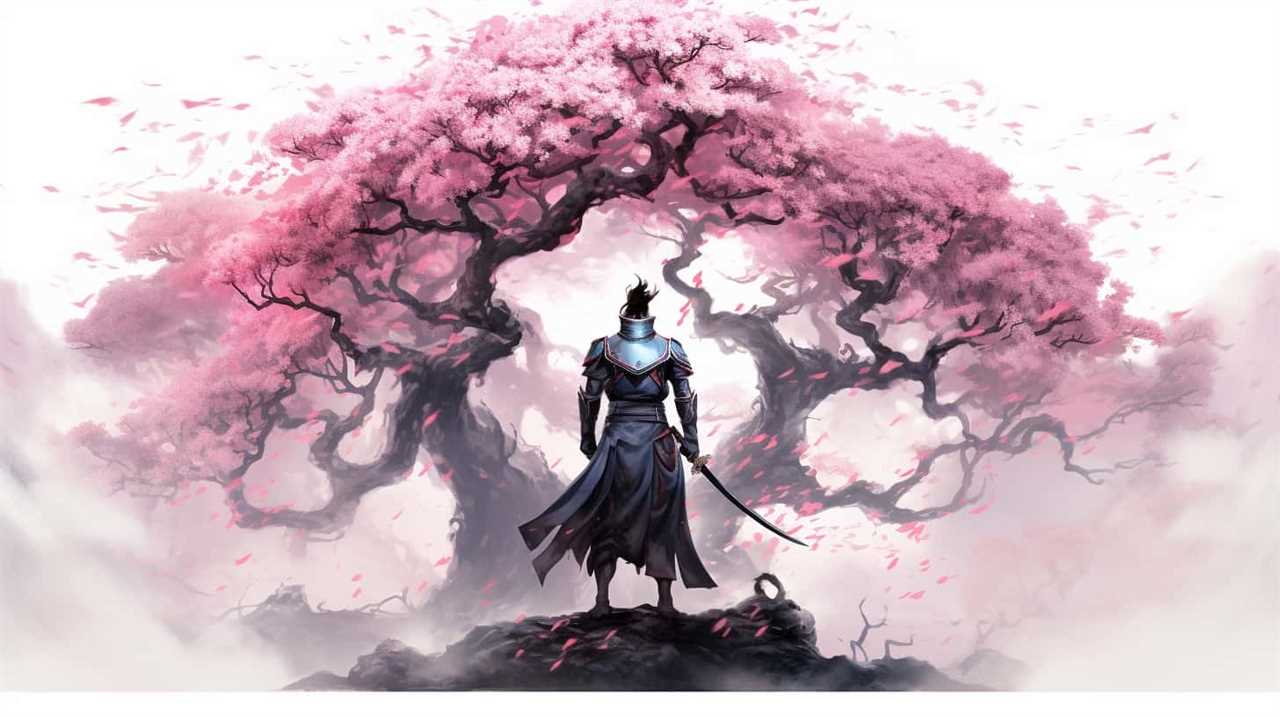
How Can Matthew 6:33 Guide Us in Prioritizing Personal Growth in Our Lives?
In prioritizing personal growth, we can look to Matthew 6:33 as a guide. By seeking first the kingdom of God and His righteousness, we align our desires with His will, thus fostering growth in all areas of our lives.
Conclusion
In conclusion, these 14 Bible verses serve as valuable tools for fostering personal growth. They provide guidance, encouragement, and inspiration for navigating life’s challenges and achieving personal development.
They offer valuable guidance, encouragement, and inspiration for navigating life’s challenges and achieving personal development.
One interesting statistic to note is that a study conducted by the American Bible Society found that individuals who read the Bible regularly reported higher levels of personal well-being, including increased happiness and a greater sense of purpose.
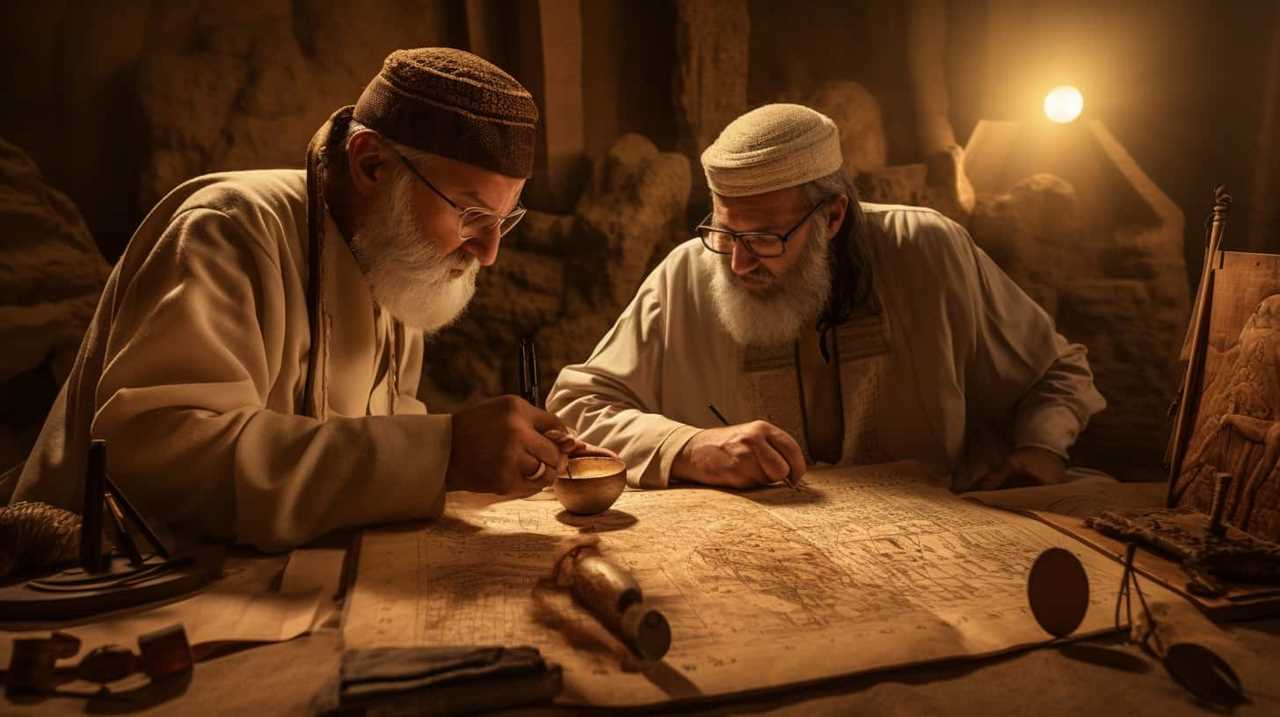
This study conducted by the American Bible Society found that individuals who read the Bible regularly reported higher levels of personal well-being, including increased happiness and a greater sense of purpose.
Therefore, incorporating these verses into our daily lives can have a profound impact on our personal growth journey.
Therefore, incorporating these verses into our daily lives can have a profound impact on our personal growth journey.
Lauren’s talent in writing is matched by her passion for storytelling. Her love for books and deep understanding of culture and entertainment add a distinct flavor to her work. As our media and press contact, Lauren skillfully bridges the gap between afterQuotes and the broader media landscape, bringing our message to a wider audience.
